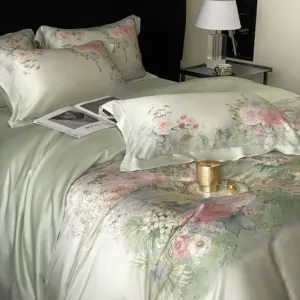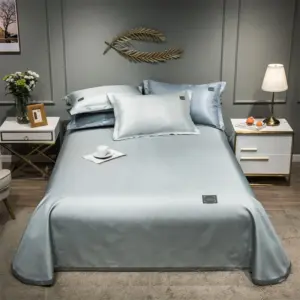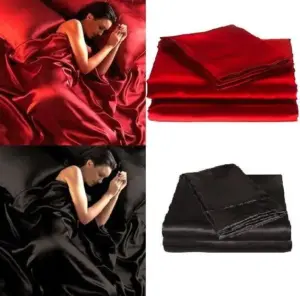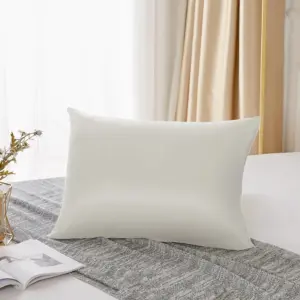The Truth About Mulberry Silk and Veganism
If you’re wondering whether mulberry silk is vegan-friendly, the answer is straightforward: no, traditional mulberry silk is not vegan. This reality stems from the fundamental production process that requires the sacrifice of silkworms to create the luxurious fabric many have come to cherish.
Veganism, at its core, seeks to exclude all forms of exploitation and cruelty to animals for food, clothing, or any other purpose. The traditional silk production method directly conflicts with this principle because it involves the killing of silkworms before they complete their natural lifecycle.
In this article, we’ll explore the complex relationship between silk production and vegan ethics. We’ll examine how mulberry silk is made, why it poses ethical concerns for those following vegan principles, and what alternatives exist for consumers seeking similar luxury without the ethical compromise.
Whether you’re a dedicated vegan or simply someone interested in making more compassionate consumer choices, understanding the amazing benefits of mulberry silk sheets alongside their ethical implications will help you make informed decisions that align with your values. The unique characteristics that make mulberry silk special are undeniable, but they come with important ethical considerations that deserve careful attention.
What Exactly Is Mulberry Silk?
The Origin of Luxury
Mulberry silk represents the pinnacle of luxury in the textile world, with a history dating back thousands of years. This exquisite fabric is produced specifically from the cocoons of the Bombyx mori silkworm, a domesticated insect species that has been selectively bred for optimal silk production.
What makes this silk variety distinct is its relationship with the white mulberry tree (Morus alba). These silkworms feed exclusively on mulberry leaves, which contributes significantly to the exceptional quality of the resulting silk. The relationship between the silkworm and its food source is so specialized that these creatures have evolved to depend entirely on human care, having lost their ability to survive in the wild.
Superior Qualities
The fabric created through this specialized process possesses remarkable qualities that have made it highly sought-after throughout human history:
- Exceptionally smooth and soft texture
- Natural temperature-regulating properties
- Hypoallergenic characteristics beneficial for sensitive skin
- Impressive durability despite its delicate appearance
- Natural sheen and lustrous appearance
This unique combination of attributes has established mulberry silk as the gold standard among silk varieties. While other types of silk exist (such as tussah or wild silk), mulberry silk is distinguished by its superior uniformity, strength, and refined texture. Our complete guide to mulberry silk bed sheets explores these qualities in greater depth.
For those experiencing the luxury firsthand, our collection of premium mulberry silk pillowcases showcases these exceptional properties while highlighting the key differences when comparing silk and vegan silk options.
The Traditional Mulberry Silk Production Process
Understanding the traditional silk production process reveals why it presents ethical concerns for those adhering to vegan principles. The journey from silkworm to finished fabric involves several stages, each with its own implications:
Cultivation and Breeding
The process begins with the cultivation of mulberry trees, whose leaves serve as the exclusive food source for Bombyx mori silkworms. These domesticated insects have been selectively bred over thousands of years specifically for silk production.
Female moths lay approximately 300-500 eggs during their brief adult lifespan. These eggs are carefully incubated until they hatch into tiny larvae (silkworms).
The Silkworm Lifecycle
Once hatched, the silkworms enter a period of intensive feeding:
- The larvae consume mulberry leaves almost continuously
- They grow exponentially, increasing their body size by about 10,000 times
- This growth phase lasts approximately 25-30 days
- After sufficient growth, they begin preparing to enter the pupal stage
Cocoon Formation
The silkworm then produces a protein secretion from specialized glands that, upon contact with air, hardens into a continuous filament. The silkworm wraps this single thread around itself, creating a protective cocoon:
- Each cocoon consists of a single silk filament stretching 300-900 meters (1,000-3,000 feet)
- The silkworm spends 3-4 days spinning its cocoon
- Inside this protective casing, the silkworm would naturally transform into a pupa and then a moth
The Critical Moment
The most ethically problematic stage of traditional silk production occurs next. Before the pupa can develop into a moth and break through the cocoon (which would damage the continuous silk filament), silk producers intervene:
- The cocoons with the silkworms inside are collected
- They are exposed to heat (through boiling, steaming, or other methods) to kill the pupae
- This process preserves the integrity of the continuous silk filament
- It takes approximately 2,500-3,000 silkworms to produce one pound of silk
Processing Into Fabric
Following this stage, the cocoons are softened in hot water to loosen the sericin (a natural gum that holds the cocoon together). The filaments from several cocoons are combined, wound onto reels, and eventually twisted into silk yarn ready for weaving or knitting into luxury items like our mulberry silk sheets.
This traditional process, while resulting in the highest quality silk, fundamentally conflicts with vegan ethics because it requires the deliberate termination of silkworm life to maintain the integrity of the silk filament.
Why Mulberry Silk Contradicts Vegan Principles
At the heart of veganism lies the commitment to avoid exploitation of and cruelty toward animals. This ethical framework extends beyond diet to encompass all aspects of consumption, including clothing and textiles. Traditional mulberry silk production fundamentally conflicts with these principles in several important ways:
Core Vegan Principles
Veganism, as defined by the Vegan Society, seeks to exclude—as far as is possible and practicable—all forms of exploitation of and cruelty to animals for food, clothing, or any other purpose. This definition creates a clear ethical boundary that traditional silk production crosses by:
- Deliberately ending the lives of silkworms before they complete their natural lifecycle
- Breeding and domesticating creatures specifically for human use
- Prioritizing material quality over the animals’ interests
The Question of Sentience
A common question in discussions about silk ethics concerns whether silkworms can actually suffer. While invertebrate consciousness remains an evolving area of scientific research, several important considerations emerge:
- Silkworms possess a nervous system that responds to stimuli
- They display avoidance behaviors when exposed to harmful conditions
- Recent scientific studies increasingly suggest that insects may experience some form of subjective experience
Many vegans apply the precautionary principle: in the absence of certainty about silkworm sentience, they choose to avoid products that require their sacrifice. This philosophical approach acknowledges that even if silkworms possess only rudimentary consciousness, their interests in continuing their lifecycle deserves moral consideration.
Scale of Impact
The scale of conventional silk production amplifies these ethical concerns:
- Billions of silkworms are killed annually for silk production
- Each piece of silk clothing or bedding represents hundreds to thousands of individual silkworm lives
For those exploring the ethical dimensions of their textile choices, understanding the pros and cons of silk versus vegan silk provides valuable context for making informed decisions that align with personal values.
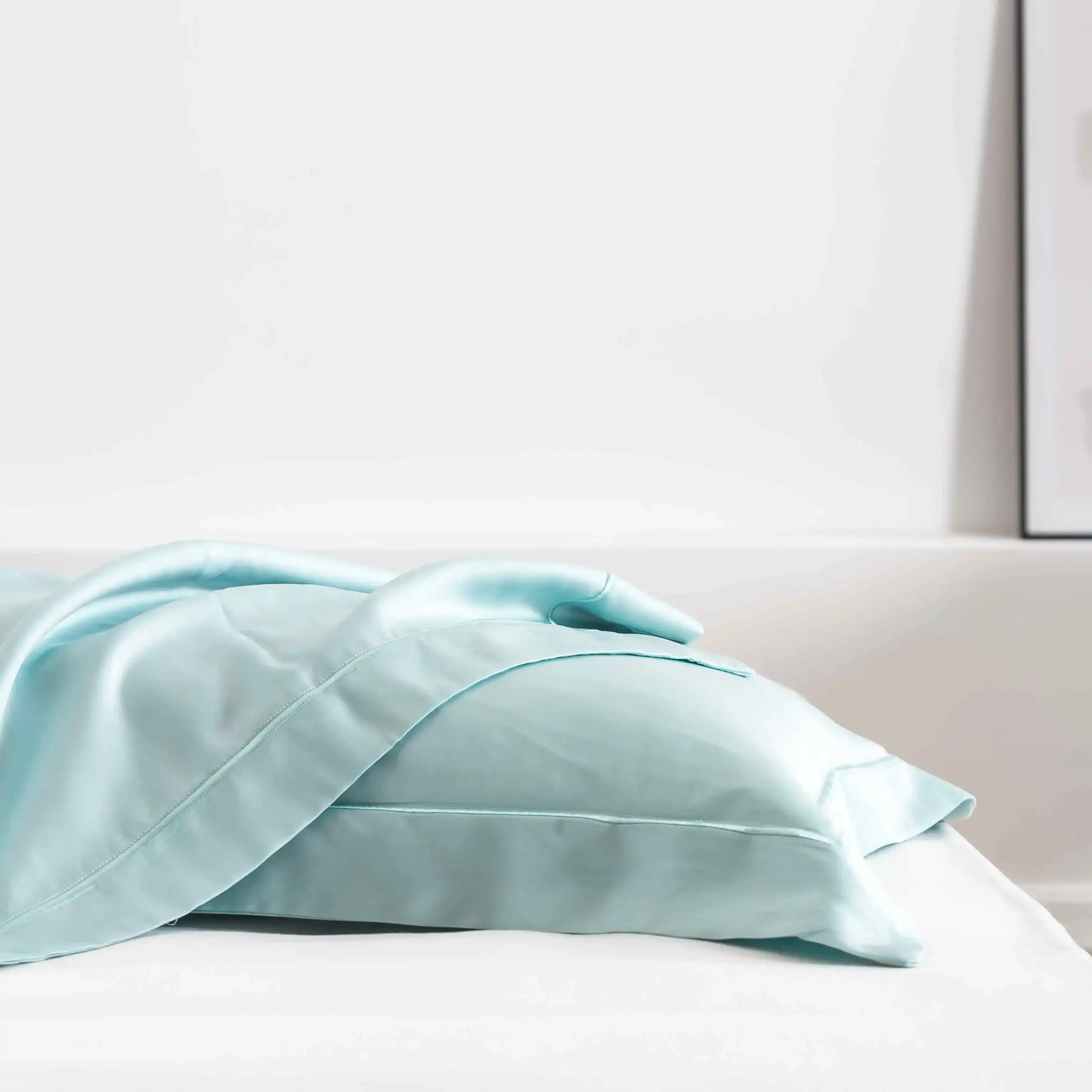
Peace Silk (Ahimsa Silk): A More Ethical Option?
In response to ethical concerns surrounding traditional silk production, Peace Silk (also known as Ahimsa Silk, from the Sanskrit word meaning “non-violence”) has emerged as an alternative that attempts to address some of these issues.
What Is Peace Silk?
Peace Silk refers to silk obtained through non-violent means. Unlike conventional methods, Peace Silk production allows the silkmoth to:
- Complete its metamorphosis within the cocoon
- Emerge naturally from the cocoon as an adult moth
- Live out its natural lifecycle, including reproduction
Only after the moth has emerged is the empty or broken cocoon collected for silk production. This approach addresses the most obvious ethical concern of conventional silk: the deliberate killing of the silkworms.
Production Differences
The Peace Silk process yields different results from traditional methods:
- The emerging moth breaks the continuous silk filament
- This results in shorter fiber lengths that must be spun together
- The final product typically has a slightly less smooth texture
- The fabric often appears more slubby or textured
- Production yields are lower, making the product more expensive
Ethical Complexities
While Peace Silk represents an improvement over conventional methods, it still raises several ethical questions for strict vegans:
Domestication Issues: The Bombyx mori silkworms used in Peace Silk are still domesticated creatures that cannot survive in the wild. They have been selectively bred to maximize silk production at the expense of their natural abilities.
Life Quality Concerns: The moths that emerge:
– Have atrophied mouthparts and cannot eat
– Live only a few days with the sole purpose of mating and laying eggs
– Continue a cycle of dependency on human management
Exploitation Framework: Even without killing, the practice still involves using animals for human benefit, which some vegans view as fundamentally exploitative.
For those weighing these considerations, it’s worth noting that the advantages of sleeping on mulberry silk can be significant, but many vegan silk bedding options now offer similar benefits without the ethical complications.
Truly Vegan Alternatives to Mulberry Silk
For those committed to vegan principles or simply seeking cruelty-free options, numerous plant-based and synthetic alternatives can provide similar qualities to mulberry silk without ethical concerns. These alternatives have advanced significantly in recent years, offering comparable luxury, comfort, and performance.
Plant-Based Alternatives
Cupro
– Source: Cotton linter (the fine, silky fibers that stick to cotton seeds)
– Properties: Silky smooth texture, breathable, good temperature regulation
– Environmental impact: Utilizes cotton industry by-products but requires chemical processing
– Feel: Very similar to silk with excellent drape and softness
Tencel™/Lyocell
– Source: Sustainably harvested wood pulp, often eucalyptus
– Properties: Exceptionally soft, moisture-wicking, naturally cooling
– Environmental impact: Closed-loop production process with minimal waste and water use
– Feel: Silky smooth with a cool, gentle touch against skin
Modal
– Source: Primarily beech trees
– Properties: Exceptionally soft, highly breathable, resistant to shrinking
– Environmental impact: Less water-intensive than cotton but requires chemical processing
– Feel: Silky smooth with excellent draping qualities
Bamboo Silk
– Source: Bamboo plants processed into fiber
– Properties: Naturally cooling, moisture-wicking, hypoallergenic
– Environmental impact: Fast-growing renewable resource, though processing can be chemical-intensive
– Feel: Exceptionally soft with a subtle sheen similar to silk
The difference between traditional mulberry silk and plant alternatives becomes clearer when examining specific comparisons like bamboo versus mulberry silk fabric, which highlights the unique properties of each material.
Synthetic Alternatives
Polyester Satin
– Source: Petroleum-based polymers
– Properties: Durable, wrinkle-resistant, affordable
– Environmental impact: Non-biodegradable, microplastic concerns
– Feel: Smooth with high sheen, though less breathable than natural alternatives
Nylon Satin
– Source: Petroleum-based polymers
– Properties: Strong, resilient, good draping qualities
– Environmental impact: Non-biodegradable, energy-intensive production
– Feel: Smooth with good drape, warmer than natural fibers
Comparison of Key Properties
| Property | Mulberry Silk | Cupro | Tencel/Lyocell | Bamboo Silk | Polyester Satin |
|---|---|---|---|---|---|
| Softness | Excellent | Very Good | Excellent | Excellent | Good |
| Breathability | Excellent | Good | Excellent | Very Good | Fair |
| Moisture-wicking | Good | Good | Excellent | Excellent | Poor |
| Hypoallergenic | Yes | Yes | Yes | Yes | Varies |
| Durability | Good | Good | Very Good | Good | Excellent |
| Environmental Impact | Animal welfare concerns | Moderate | Low | Low-Moderate | High |
Our bamboo silk bedding sets showcase how these vegan alternatives can deliver luxurious experiences while aligning with ethical principles.
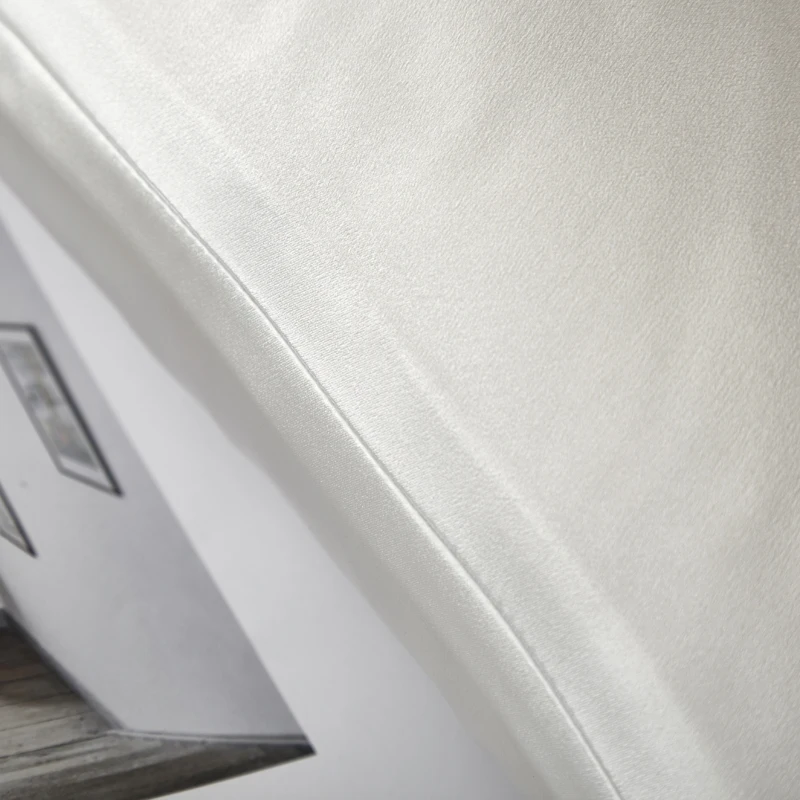
How to Choose: Evaluating Silk Alternatives
Selecting the right vegan silk alternative involves considering several factors that balance personal preferences, ethical values, and practical needs. This decision-making framework can help guide your choice:
Prioritize Your Key Requirements
Begin by identifying what specific silk qualities matter most to you:
- Texture and Feel: If the silky-smooth sensation against skin is paramount, cupro and Tencel tend to most closely mimic real silk’s distinctive feel.
- Temperature Regulation: For those who value silk’s cooling properties, bamboo and Tencel excel at natural temperature control.
- Durability and Longevity: If long-term use is essential, Modal and Tencel typically offer better durability than some other alternatives.
- Allergy Considerations: Most plant-based alternatives are naturally hypoallergenic, with bamboo offering additional antimicrobial properties.
Environmental Considerations
The environmental impact varies significantly between alternatives:
- Processing Methods: While all plant-based alternatives require some processing, closed-loop systems (like those used for Tencel) minimize environmental impact.
- Resource Usage: Consider water usage, land requirements, and chemical inputs needed for different alternatives.
- End-of-Life: Natural fibers will biodegrade, while synthetic options may persist in the environment for centuries.
Application-Specific Recommendations
Different alternatives excel in different applications:
- Bedding: Tencel and bamboo excel for sheets and pillowcases due to their breathability and moisture-wicking properties. The benefits of vegan silk bedding include excellent temperature regulation and skin-friendly surfaces.
- Clothing: Cupro and modal work exceptionally well for garments requiring good drape.
- Decorative Items: Rayon and polyester satin can be suitable for decorative applications where direct skin contact is minimal.
Care Considerations
Vegan alternatives often offer easier care than traditional silk:
- Many plant-based options are machine-washable (unlike real silk)
- Synthetic alternatives typically resist wrinkling better than natural fibers
- Some alternatives may be more colorfast and resistant to fading
Our collection of eucalyptus silk sheets demonstrates how these practical considerations translate into real-world products that balance luxury, ethics, and functionality.
Eucalyptus Silk Bedding Sets, Eucalyptus Silk Sheets
Price range: $360.24 through $393.60 Select options This product has multiple variants. The options may be chosen on the product page- Price range: $267.82 through $306.55 Select options This product has multiple variants. The options may be chosen on the product page
Bamboo Silk Sheets, Cooling Silk Sheets
Price range: $130.76 through $177.80 Select options This product has multiple variants. The options may be chosen on the product pageBamboo Silk Sheets, Queen Size Silk Fitted Sheet
Price range: $230.24 through $297.88 Select options This product has multiple variants. The options may be chosen on the product pageKing Size Silk Pillowcases, Mulberry Silk Pillowcases, Queen Size Silk Pillowcases
Price range: $94.96 through $121.56 Select options This product has multiple variants. The options may be chosen on the product pageMulberry Silk Fitted Sheet, Mulberry Silk Sheets
Price range: $486.21 through $944.97 Select options This product has multiple variants. The options may be chosen on the product page
Are All Satin Products Vegan-Friendly?
A common source of confusion for ethically-minded consumers involves understanding the difference between satin and silk. This confusion often leads to misconceptions about whether satin products align with vegan principles.
Satin vs. Silk: Understanding the Distinction
Satin refers to a weaving technique, not a specific material. This weaving method creates a glossy surface with a matte back by floating yarn across sections of the fabric. The resulting fabric has that characteristic smooth, lustrous finish regardless of the fibers used.
Silk, conversely, is a specific fiber produced by silkworms. While silk can be woven into a satin weave (creating silk satin), satin itself can be made from various materials:
- Animal-derived fibers (silk)
- Plant-based fibers (cotton, rayon, bamboo)
- Synthetic fibers (polyester, nylon)
Identifying Vegan Satin Products
To determine if a satin product is vegan-friendly, you need to identify the fiber content, not just the weave pattern:
Vegan Satin Options:
– Polyester satin
– Nylon satin
– Rayon/viscose satin
– Cotton satin
– Bamboo satin
Non-Vegan Satin:
– Silk satin
Product labels should specify the fiber content. Terms like “silk satin” indicate animal-derived materials, while “polyester satin” or “satin finish” on polyester products indicate vegan-friendly options.
Understanding the fundamental differences between these materials helps when evaluating natural silk versus alternative fabrics for various uses and ethical considerations.
Frequently Asked Questions About Silk and Veganism
Is any type of silk truly cruelty-free?
While Peace Silk (Ahimsa Silk) allows moths to emerge naturally before harvesting the cocoons, most vegans still consider it problematic due to the domestication and exploitation of silkworms. Truly cruelty-free alternatives would be plant-based or synthetic materials that mimic silk’s properties without using any animal-derived components.
Can silkworms feel pain during the harvesting process?
Scientific understanding of invertebrate pain perception continues to evolve. While silkworms show reflexive responses to harmful stimuli and possess a nervous system, the exact nature of their subjective experience remains uncertain. Many vegans apply the precautionary principle: without definitive proof that silkworms don’t suffer, they choose to avoid products requiring their sacrifice.
What’s the difference between wild silk and mulberry silk in terms of ethics?
Wild silk (tussah or tussar silk) is harvested after the moths have naturally emerged from their cocoons, making it similar to Peace Silk in concept. However, it involves collecting cocoons from wild silkworm species rather than domesticated ones. While this means the moths complete their lifecycle, the harvesting process still involves using animal-derived materials, which conflicts with strict vegan principles.
How can I tell if a product labeled as “silk” is vegan?
True silk is always animal-derived and therefore not vegan. Look for specific terminology like “vegan silk,” “plant silk,” or the actual material name (Tencel, lyocell, rayon, etc.). When in doubt, check the fiber content label, which should clearly state what materials were used in production.
Are vegan silk alternatives better for the environment?
The environmental impact varies widely among alternatives. Plant-based options like Tencel (using closed-loop processing) often have lower environmental footprints than both traditional silk and petroleum-based synthetics. The most environmentally friendly choices tend to be plant-derived materials produced with sustainable farming practices and minimal chemical processing.
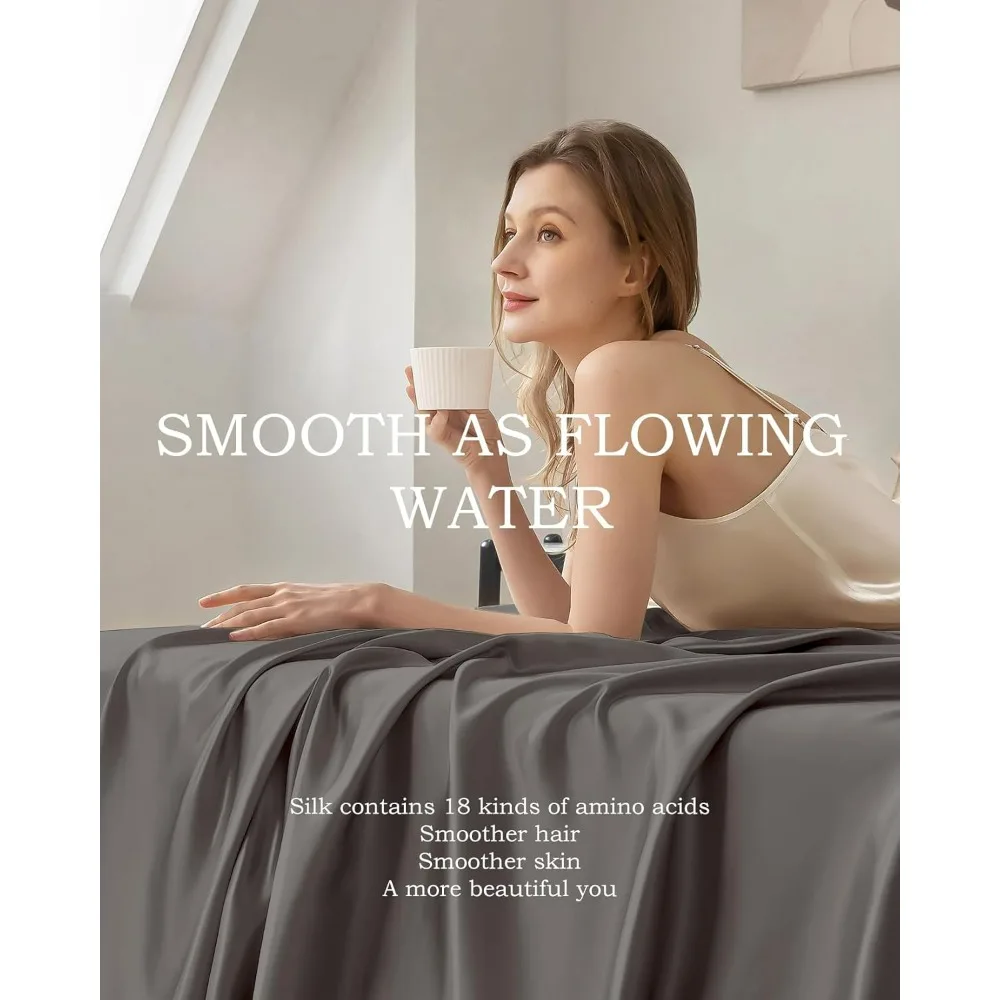
Making Informed Choices: Beyond Materials
When considering the ethics of textile choices, the material source represents just one dimension of a more complex picture. Making truly informed decisions involves looking beyond the vegan/non-vegan binary to consider multiple factors that influence the overall impact of your choices.
Production practices matter significantly across all textile types. Even plant-based materials can involve problematic labor conditions or harmful chemical processes. Looking for transparency in supply chains and certifications like GOTS (Global Organic Textile Standard) or OEKO-TEX can help identify responsibly produced options.
Longevity also plays a crucial role in ethical consumption. A high-quality product that lasts for many years may have less environmental impact than frequently replaced lower-quality alternatives, regardless of material source. This perspective encourages investing in quality pieces that withstand the test of time.
At Sanctuary Soft, we believe in providing options that allow customers to align their purchases with their values. Whether you choose traditional mulberry silk for its unique properties or opt for our plant-based alternatives, making conscious, informed decisions about the products that touch your skin every night represents a meaningful step toward more mindful consumption.


